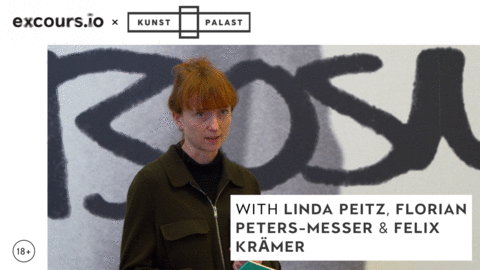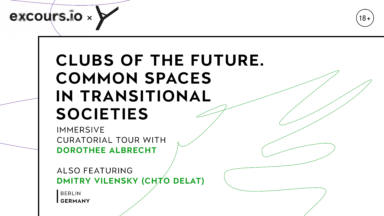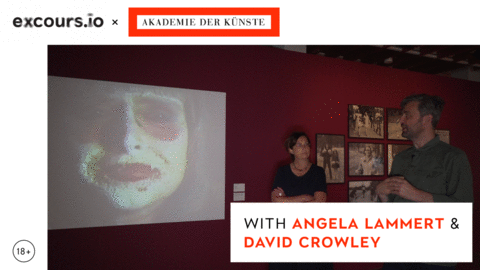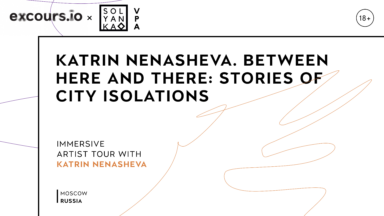Sourtna. Carte Blanche to Yoriyas. Moroccan Photographers of Today and Tomorrow
The exhibition Sourtna. Carte Blanche to Yoriyas. Moroccan Photographers of Today and Tomorrow opens Morocco’s first National Museum of Photography, showcasing contemporary Moroccan image-makers. Inaugurated in January 2020 within Rabat’s historic Fort Rottembourg, a landmark built in 1888, this institution makes art accessible to diverse neighborhoods. The project expands cultural access, reflecting Morocco’s commitment to visual self-expression and societal reflection through its artists. Curated by acclaimed photographer Yassine Alaoui Ismaili (Yoriyas), it consciously bridges generations, presenting established and emerging talents. Visitors discover how local photographic voices capture a nation’s evolving identity and foster community connections.
Why should you watch this?
The film Sourtna shows how a new museum and a young curator-photographer can redraw a nation’s visual story, making photographic practice public and collective. Set in Fort Rottembourg and curated by Yoriyas, it stitches together established names and smartphone images, moments of youth, family, and bold questions of identity. Seeing a rooftop portrait side-by-side with a grainy phone frame feels both intimate and political; listening to artists talk about transmission between generations moves from pride to urgency. The film leaves a clear charge: when communities claim their image-making, they reshape history and open space for conversation and belonging.
110 Years, 110 Works. Société Générale Collection
110 ans, 110 œuvres, at the Mohammed VI Museum of Modern and Contemporary Art in Rabat, commemorates Société Générale Maroc’s 110th anniversary and its long-standing commitment to art and Moroccan culture. This exceptional exhibition, a collaboration with the National Museum Foundation, features a precious part of the bank’s collection, including previously unseen works. It takes visitors on a timeless journey, tracing Moroccan art’s evolution from the early 20th century, starting with pioneers like Ben Ali R’bati, across four distinct periods to the present day. The exhibition highlights Moroccan artists’ contribution to national identity. It celebrates a rich artistic heritage and Société Générale Maroc’s enduring role in art’s promotion, anticipating the opening of its own museum in 2024. Visitors gain insight into Morocco’s artistic dynamism and the intricate relationship between banking and cultural patronage over more than a century.
Why should you watch this?
The exhibition 110 ans, 110 œuvres matters today because it shows how art can carry a nation’s memory while speaking to its future. Moving between the early brushstrokes of Ben Ali R’bati and the global perspectives of contemporary Moroccan artists, it evokes both pride and questioning: how does creativity define who we are in a world of constant change? Visitors may feel inspired by the intimate voices of the 1980s generation, who turned personal experience into universal expression, or by today’s works shaped through worldwide dialogue. Ultimately, the exhibition reminds us that art’s power to connect time, place, and people remains urgently relevant.
Whispers of the Forest
The exhibition Whispers of the Forest presents a playful, interactive world where contemporary Korean art explores themes of nature, community, and coexistence. This immersive installation, designed especially for children and families, addresses pressing modern issues like rapid urban development, environmental loss, and displacement. The gallery becomes a forest playground featuring works by artists Um A Long, who creates sculptures from discarded materials, and Haksoon Hong, who brings his vibrant Wink Tokki World to life through murals and animations. Visitors are encouraged to engage directly with the art, moving beyond passive viewing to reflect on sustainability and our relationships with others. The experience prompts us to imagine a future where all beings can live and grow together in harmony.
Why should you watch this?
The film Whispers of the Forest asks what it means to share a world at a moment when climate change and rapid urban growth unsettle familiar ways of living. Um A Long’s sculptures, shaped from discarded materials, echo the resilience of creatures adapting to damaged environments, while Haksoon Hong’s Wink Tokki characters invite us into a universe where play and friendship make coexistence possible. Together, these voices create a mood that shifts between unease and delight, reminding us that survival and joy are intertwined. The film ultimately leaves viewers with a simple yet urgent question: how do we choose to live together?
TIME FOR OUTRAGE! Art in Times of Social Anger | Introduction
Can anger and rage be justified in a world riddled with oppression and inequality? Are these emotions destructive forces or vital catalysts for social change? As democracy faces crises and populism gains ground globally, these questions have sparked renewed debate. Contemporary artists have responded, using their work to navigate and challenge the pressing issues of our time.
The exhibition ‘Time for Outrage!’ in Düsseldorf explores these questions through six thematic blocks: Right-wing Shift, Trumpism, Protest, Postcolonialism, Feminism, and Discrimination. Across a diverse range of mediums — including installations, drawings, paintings, sculptures, photography, and video art — 40 international artists immerse viewers in the visceral realms of protest, social dissent, and public anger. The exhibition doesn’t just present anger as a raw emotion; it portrays it as a vehicle for dialogue, resistance, and empowerment in the face of systemic injustice.
A substantial portion of the works on display come from the collection of entrepreneur and collector Florian Peters-Messer, whose commitment to socially engaged art amplifies the urgent messages these pieces convey.
Why should you watch this?
CLUBS of the FUTURE. Common Spaces in Transitional Societies
Why should you watch this?
Notes from the Underground. Art and Alternative Music in Eastern Europe 1968-1994
The exhibition Notes from the Underground. Art and Alternative Music in Eastern Europe 1968–1994 examines the intersection of underground music and visual arts under communist regimes in Eastern Europe. It highlights how rock, punk, and new wave music, alongside performance art, fashion, and film, became tools of countercultural expression against state control. In response to censorship and scarcity, artists and musicians created homemade instruments, produced Samizdat magazines, and distributed recordings. The exhibition underscores the role of improvisation and irony in resisting authoritarianism, with works from Poland, Yugoslavia, the Soviet Union, and Czechoslovakia, offering a new perspective on how art and music intertwined as forms of dissent.
Why should you watch this?
In a time where freedom of expression remains a contested issue, Notes from the Underground. Art and Alternative Music in Eastern Europe 1968–1994 draws vital parallels between past and present struggles against authoritarianism. By showcasing how rock, punk, and new wave music intertwined with visual arts to resist state control, the exhibition highlights the subversive power of creativity. From DIY instruments to Samizdat magazines, it captures the spirit of rebellion and improvisation that thrived under repressive regimes, making it a timely exploration of art’s role in confronting oppression and fueling collective resistance.
Katrin Nenasheva. Between Here and There: Stories of City Isolations
Between Here and There: Stories of Urban Isolation is an exhibition by Katrin Nenasheva that explores the lives of individuals permanently isolated in psychiatric institutions. In her performance, Nenasheva traversed city streets wearing virtual reality glasses displaying panoramic images from these institutions, highlighting the barriers that separate their world from ours. She engaged with the public in various locations, including the subway and Red Square, inviting them to experience her perspective and share the motivations behind her work. The exhibition presents documentation of her journey, allowing visitors to engage with virtual reality themselves, fostering a dialogue between “here” and “there.” This immersive experience encourages reflection on societal isolation and connection.
Why should you watch this?
Katrin Nenasheva’s exhibition Between Here and There: Stories of Urban Isolation offers a profound exploration of the often-overlooked lives of individuals in psychiatric institutions. By donning virtual reality glasses that display panoramic views of these spaces, Nenasheva creates a striking connection between the isolated and the public, inviting visitors to step into her shoes as she navigates familiar urban landscapes. This immersive performance, paired with documentation of her interactions in locations like the subway and Red Square, blurs the lines between separation and engagement. Through this unique experience, attendees are encouraged to confront their perceptions of mental health, societal isolation, and human connection, prompting vital conversations about empathy and understanding in our communities.
Tobias Zielony. Maskirovka [Concealment]
Why should you watch this?
Tobias Zielony’s “Maskirovka” is a compelling reflection on the resilience and creativity of Kyiv’s queer techno scene, resonating profoundly in today’s world marked by social and political upheaval. Set against the backdrop of the post-Maidan era, this exhibition underscores the ongoing struggle for identity and belonging in the face of repression and misinformation, themes that echo in various global contexts today. By employing the concept of “maskirovka”—a tactic of deception used in conflict—Zielony captures how both artists and activists navigate the complexities of expression and resistance. His photographs and dynamic animated film form a visual narrative that invites critical reflection on the intersection of culture, politics, and personal agency. As societies grapple with fragmentation and polarization, “Maskirovka” reminds us of the power of art to forge connections, challenge norms, and provoke dialogue, making it an essential commentary on contemporary struggles for freedom.
Clemens von Wedemeyer – Mehrheiten [Majorities]
The exhibition critically examines the evolution of mass mobilization and crowd dynamics in both historical and contemporary contexts, drawing inspiration from Elias Canetti’s “Crowds and Power.” Set against the backdrop of the GfZK’s new architectural space, the exhibition engages with the complexities of collective action, exploring how digital public spheres shape democratic participation while simultaneously being exploited for exclusionary practices. Featuring a rich array of video installations and cinematic works, including the new production “70.001,” which reimagines the 1989 Leipzig demonstrations, “Majorities” invites reflection on the nuances of social behavior and the implications of simulated experiences in gaming and surveillance. Through this thoughtful presentation, Wedemeyer prompts us to consider the intertwining narratives of isolation and community, resonating powerfully in today’s fragmented society.
Why should you watch this?
Watching this guided tour is crucial in our current landscape marked by digital polarization and the resurgence of mass movements. As societies grapple with issues of identity, representation, and exclusion within online spaces, this exhibition offers a vital framework for understanding how crowd dynamics shape our collective psyche and political discourse. In an age where social media can amplify divisive ideologies, gaining insights into the historical and psychological underpinnings of mass mobilization is essential. The tour encourages participants to critically examine how these dynamics operate today, heightening awareness of the fine line between community engagement and manipulation. By exploring these themes, viewers are invited to reflect on their agency within the digital public sphere, making the experience not just an exploration of art and history, but also a compelling call to engage thoughtfully in the ongoing dialogue about democracy and social responsibility in our interconnected world.








![Tobias Zielony. Maskirovka [Concealment] Tobias Zielony. Maskirovka [Concealment]](https://cloud.excours.io/film-previews/tobias-zielony.gif)
![Clemens von Wedemeyer – Mehrheiten [Majorities] Clemens von Wedemeyer – Mehrheiten [Majorities]](https://cloud.excours.io/film-previews/clemens-von-wedemeyer.gif)